Julie Armstrong, Chief People Officer – Sig Plc
Hayley Tatum, Previously Chief People & Corporate Affairs Officer – Asda
Aaron Alburey, Founder – Lace Partners
Nebel Crowhurst, Chief People Officer – Reward Gateway
Alix Bolton, Chief People Officer, Europe – Advantage Smollan
Katrina Simpson-Haines, Chief People Officer – Sysco
Julian Holmes, Client Executive Director – Lace Partners
Sarah Petherick, Head of Colleague Experience – Spirax Sarco Engineering Plc
Sarah Tozer, Interim Head of Human Resources – ST International
Business transformation is now a continuous process driven by technology, social and economic change, a myriad of local and global external and internal influences. business leaders have accelerated digital transformation in the past two years, but only 22 percent of firms are future-ready, while 64 percent of companies are planning to build new business offerings in 2025, which points to the urgency that businesses place on the fast-accelerating future, with its mercurial change and great uncertainty.
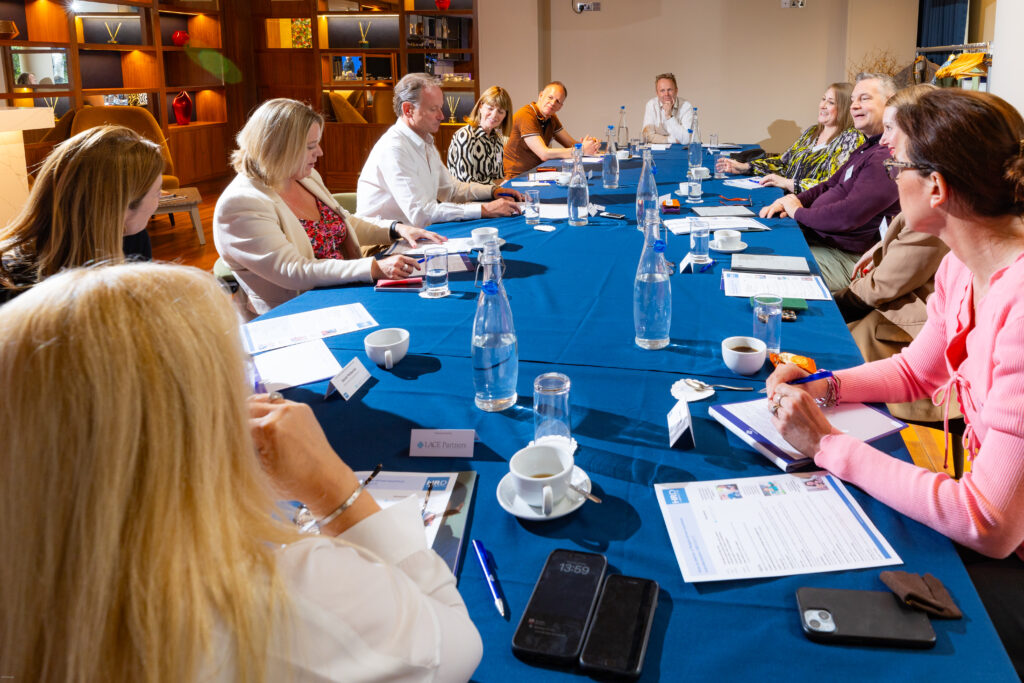
LET’S START WITH THE BIG PICTURE, WHAT ARE THE KEY DRIVERS BEHIND YOUR BUSINESS TRANSFORMATION EFFORTS?
Nebel Crowhurst: For us, transformation isn’t a standalone initiative, it’s woven into our broader organisational strategy. Since our acquisition two years ago, our main focus has been on integrating two large, complex businesses. That may sound like a long process, but given the scale and intricacy involved, it’s necessary. We don’t label it a “transformation strategy” per se, it’s more about how we evolve as a business and, as a technology company operating in a competitive SaaS space, there’s always pressure to innovate and stay ahead.
Hayley Tatum: Technology and competition are constant forces, regardless of who owns the business or what the stated purpose is. In my previous roles, we faced layers of change – some strategic, like ownership shifts – and others driven simply by market pressure. You can’t pause just because you’re restructuring, the pace of competition won’t allow it. When you’re leading a large, often change-hesitant workforce – many of whom are unionised, in shift-based roles – communication becomes absolutely critical.
Alix Bolton: When you’re operating across global territories with an increasingly complex tech stack, that strategic clarity and cohesion becomes even more important.
Sarah Tozer: Well-structured change is where transformation is well-communicated, with a clear operating model and a roadmap. That’s where you see real momentum. When the narrative is fractured or if parts of the business are being sold, while others are trying to grow, it creates fatigue. You end up with isolated initiatives, but no “joined-up” story to align people behind.
Julie Armstrong: We’ve had to be very intentional about our transformation – where do we spend to create the most value? For us, that’s digitising the customer experience, leveraging data and carefully targeted M&A that brings in new customers and reduces competition. But the big lesson is, listen more and dictate less, don’t over-control, let unique strengths across the business shine and don’t drown in unnecessary process.
LET’S CONTINUE BY EXPLORING HOW THESE TRANSFORMATIONS ARE SHAPING YOUR OPERATING MODELS.
Sarah Petherick: The question becomes as scale builds, how do you drive efficiency without becoming too controlling? Managing in uncertain times means switching to learning mode. One advantage we have is a decentralised supply chain, it’s made us more resilient to some global disruption.
Katrina Simpson-Haines: Strategy and transformation are inseparable and the main drivers right now are tech transformation. Another big area of change is our network strategy, insourcing capabilities and foodservice supply chains. It’s a fast-moving picture and agility is critical because we have multiple, simultaneous programmes running.
Aaron Alburey: There’s a theme emerging here, that change has become ‘business as usual’. Gone are the days when transformation was a “big event” every few years. We recently surveyed around 450 C-suite leaders and one statistic stood out, two-thirds of CEOs now value their CPO’s input, equal to or higher than other C-suite members when it comes to transformation.
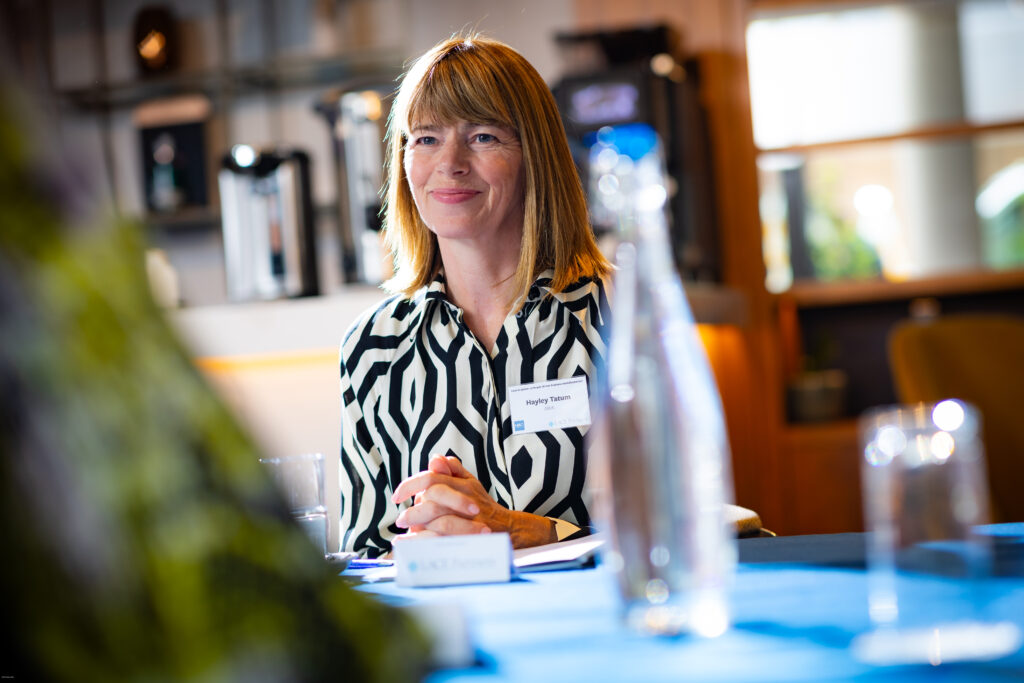
Nebel Crowhurst: We often hear CEOs say they want a ‘commercial’ HR leader, but do they really know how to use one? I’ve worked with some fantastic CEOs who include HR right from the moment strategy is just a concept. That confidant type relationship is gold, but I’ve also experienced the opposite, where the strategy is baked and HR’s just there to “deliver” it.
Julian Holmes: The big opportunity is for people leaders to claim their space – not just as implementers – but as strategic enablers. If you’re looking to unlock value, people are the biggest lever and the biggest risk. Shift that dial even slightly and the return can be massive.
Aaron Alburey: The burning question to delegates has to be, what’s your relationship like with your CEO on a day-to-day basis?
Hayley Tatum: My experience is we talked all the time – sense-checking ideas, rehearsing messages – preparing for conversations with the rest of the C-suite. That currency of dialogue acts as glue, keeping the leadership team aligned and together.
Nebel Crowhurst: The relationship between the CPO and CEO is absolutely paramount to the success of the business – I find it fascinating that your research shows two-thirds of people agree with that – I’d love to know what the other third is thinking – and what the rest of the C-suite is doing.
Katrina Simpson-Haines: Just to add to that – a connected point – I really believe it’s our responsibility to build our teams’ competence to be the CPOs of the future. That can get lost.
Hayley Tatum: There’s a real difference between being in the business functionally and being across the business. Our role is usually to take that helicopter view, to think about how all the different stakeholders and shareholders can be kept current and interact and connect to achieve optimal performance.
Julian Holmes: The appetite, desire and opportunity are all there, but in practice, it often just doesn’t happen. The next part of the research looked at what’s actually preventing it? The data reveals clear themes about how well – or not – the HR function aligns with other key business functions. Often in tech transformation, there is no real people and org involvement – there’s change adoption for sure – but no understanding of the impact of automation as part of a workforce transition plan. When roles change, it’s not just about training, it’s about reskilling and redesigning work. A lot of people say they want to be data-driven, but what they end up doing is just flooding everyone with HR data.
Sarah Petherick: There’s this tension about having a seat at the table, but then we are told to stay in our lane. It’s not about just throwing dashboards at the C-suite, the reality is we need to step out of our lane, bring real business insight, know the customer journey and understand where value sits in the organisation.
Aaron Alburey: A lot of the CPOs now have other roles as NEDs too and that has helped their executive teams appreciate the people perspective more. Some organisations are actively encouraging this as part of leadership development, it’s a great way to broaden the mindset of the C-suite.
Alix Bolton: It’s about being really deliberate with communication touchpoints. Being new to the business, one of the first things I prioritised was time out in the field – we’re so dispersed as a workforce – I needed to see what happens in store, how a creative brief lands with a client.
Nebel Crowhurst: That kind of visibility is powerful, but it comes with challenges. If you make yourself available, then you have to be prepared when people seek you out. I’ve learned to bring the whole team into that promise. If someone reaches out and I know someone else is better placed to help, I’ll loop them in. I’m not pretending I know everything, but elevating the right voices raises the team’s credibility. It’s not about ego, it’s about delivering value.
Katrina Simpson-Haines: There is a risk of leaving people behind, especially when the change isn’t tangible, such as the ERP system or a redesigned logistics network. Those changes are just as impactful, but the visibility is much lower and harder to articulate in a meaningful way at all levels and that requires continuous communication during the journey, not just at the end.
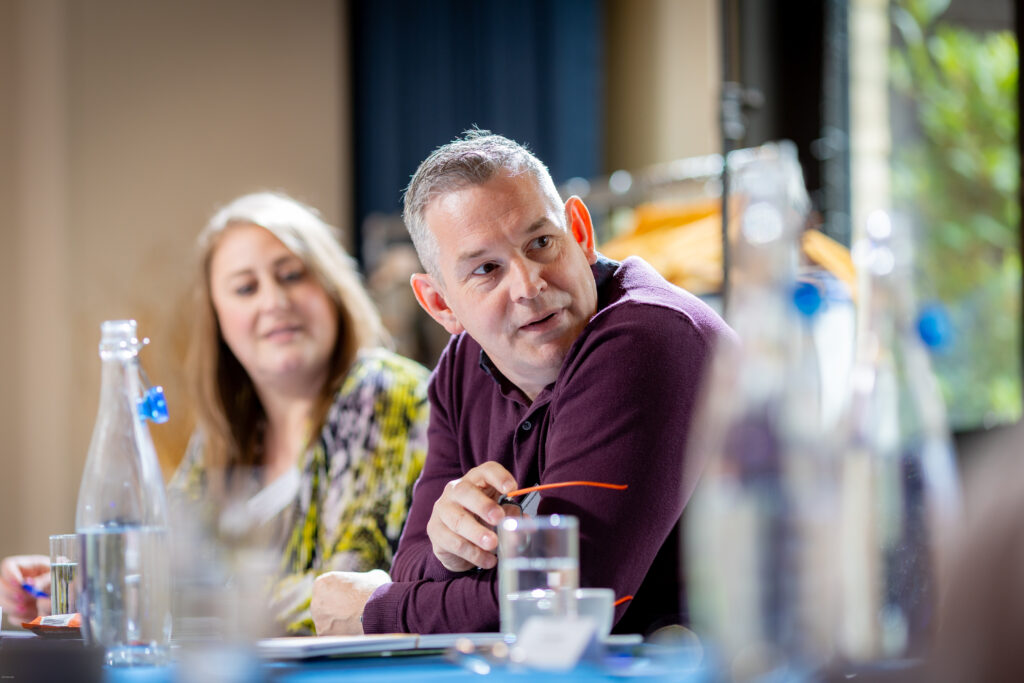
Aaron Alburey: The big theme is, we’re living in constant change and we have to be deliberate about the culture we’re building, one that can adapt. Critically, it’s how do we push the ability to adapt right through the organisation, not just the top third. That’s where psychological safety becomes non-negotiable. You can’t ask people to lead change if they don’t feel safe to do it and as CPOs, we can influence that, but it takes conscious and consistent effort.
Sarah Tozer: When transformation is done badly, psychological safety goes out the window. It’s fragile and once broken, it’s so hard to rebuild.
Alix Bolton: Resilience is a current buzzword, as if it’s the value panacea to change, but I think it just masks chaos. We need to stop using “resilience” as an excuse for poor change management. It’s our role as HR leaders to hold the mirror up to that.
Julian Holmes: We tend to think of transformation as top-down and we rarely hear of effective change being driven from the frontline. To tackle high attrition and burnout, McDonald’s worked directly with site managers to identify pain points. Instead of head office prescribing solutions, they used analytics with the restaurant teams, automated the admin, freed up managers to lead and saw better performance across the board. This kind of approach is more than process change, it’s a philosophy.
Nebel Crowhurst: That’s the power of employee voice, you must not assume you know what people need. Strategy needs to flow from the top and the bottom. You align to the organisational goals, but you must also respond to lived experiences and when you pull those together, that’s evidence-based practice in action. That’s how you prioritise, shape your EVP and build engagement that sticks.
Sarah Petherick: The norms of engagement have changed – Gen Z isn’t just asking for authenticity and transparency – they expect it. It’s not just about telling, it’s about creating space for people to own the story.
Sarah Tozer: Let’s not forget the middle layer, we focused on them heavily after our engagement survey flagged fatigue. We created a development framework which enabled all managers to choose what skills they wanted to build. They became advocates for change – not just executors of it – and that improved everything.
Alix Bolton: Indeed, middle management is the most overlooked population and yet they are also the key to unlocking any change, they are the “live-or-die” layer. Enabling people who do the work to design the solution saves time and money and the result will be more readily accepted, adopted and championed.
Julian Holmes: If you have a stakeholder resisting change, make sure you involve them in the design – same for middle managers – don’t just tell them to implement, let them test, challenge and co-create.
Hayley Tatum: Agreed, test and learn with the team – and allow them to break it, find the shortcuts and ultimately make it better – then let them be the ones to share it. Especially in unionised environments, bring everyone in early and heed their recommendations.
WHAT ROLE IS HR PLAYING IN THE ORGANISATION’S TRANSFORMATION AND HOW WOULD YOU GAUGE ITS IMPACT?
Hayley Tatum: I see HR as deeply responsible for communication – relentlessly, repetitively and creatively creating environments – and coaching leaders to convey messages across a workforce that spans generations and roles. Whether someone is working in the middle of the night or behind a wheel, we have to keep engaging.
Nebel Crowhurst: There is now a real distinction between the tactical HR Director and the strategic CPO – the title matters less than the remit – but the shift is happening. We still need to educate both our peers and ourselves about what strategic HR truly looks like.
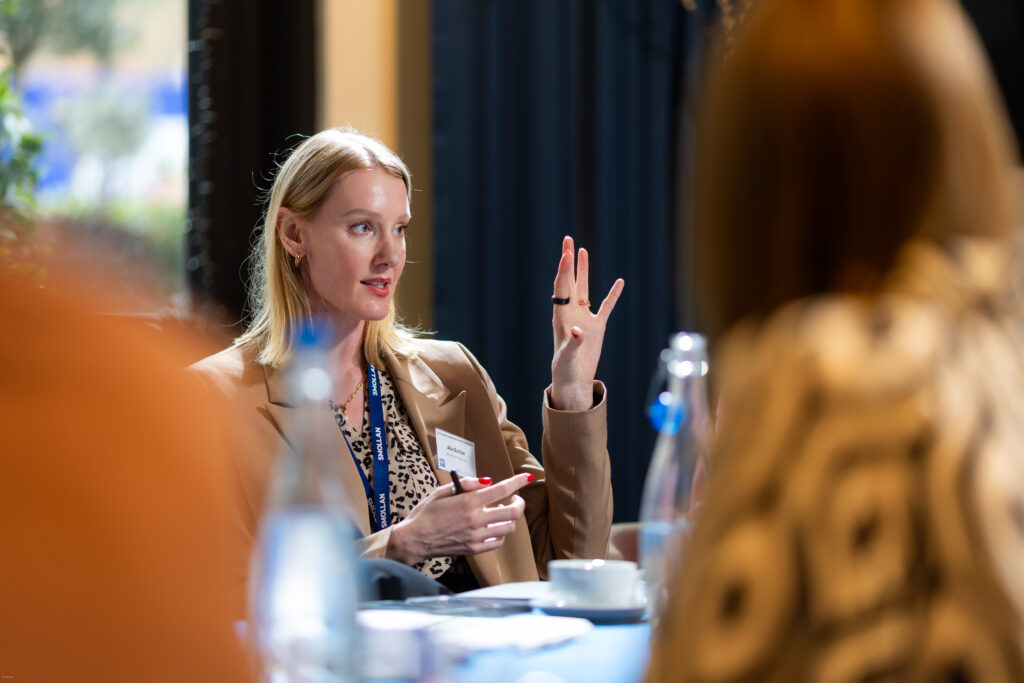
Alix Bolton: It is both an operational and experimental role and I often think of the organisation as a social lab – it’s not just about values anymore – it’s about value. As HR, we design products and experiences people can personalise and we can align life stages with organisational goals. That’s a powerfully strategic lever.
Sarah Tozer: HR is an extension of the business, rather than it being “them” and “us”. I recently heard from the Board that ‘we are the business’, which I found enlightening. HR is no longer seen as separate or secondary. That shift is still underway, it’s happening and it’s empowering.
Sarah Petherick: It’s about credibility and unapologetic presence. Some of the best CPOs I’ve worked with came from the business and they bring immediate clout. Additionally, I’ve seen great CPOs leaders who just won’t entertain the debate about ‘a seat at the table’, ‘you just sit down!’ That mindset is eminently powerful.
Katrina Simpson-Haines: Right now, I’m challenging my team on the balance of how much are we reacting to the business agenda versus shaping it. We’re not fully integrated yet, but we’re threading our strategic priorities – resilience, change and agility – through transformation.
Aaron Alburey: The people function plays a vital role in enabling change, whether it’s culture, leadership or engagement, we’re in the thick of it. The data backs this up – two-thirds of C-suites say HR’s current capacity is the biggest barrier to transformation – so, they know we’re essential, but have a capability gap to close.
DO YOU THINK THAT WE’RE EVER READY FOR CHANGE?
Aaron Alburey: I see this as an opportunity, not a threat. Change is inevitable, so rather than resisting it, we should build organisations capable of adapting to it. That means treating people like adults and creating a culture where experimentation is safe and structured. Tech is evolving rapidly – too rapidly to apply cleanly – and that uncertainty is our only certainty – that and the knowledge that historically, we’ve adapted to change before. I remember when only senior consultants had laptops and now it’s unthinkable not to have one – COVID showed us we can pivot fast – and my view is that with AI, it’s okay to be a fast follower – you don’t need to lead the race – just create space to explore, test and learn.
Hayley Tatum: But there’s real fear right now – especially around data and cybersecurity – the recent retail hacks have created a heightened nervousness. There’s a difficult balance to achieve to keep innovating and trusting people to act responsibly, yet the environment feels vulnerable.
Alix Bolton: In the sectors I know well, that fear is starting to stall momentum, just when we were making progress, the panic button has been pressed. The paranoia about risk is real.
Sarah Petherick: I’m seeing that fear too. Customers are becoming wary about sharing information. Confidence has taken a hit – maybe this will settle with time – but I’m noticing an atmosphere of tension.
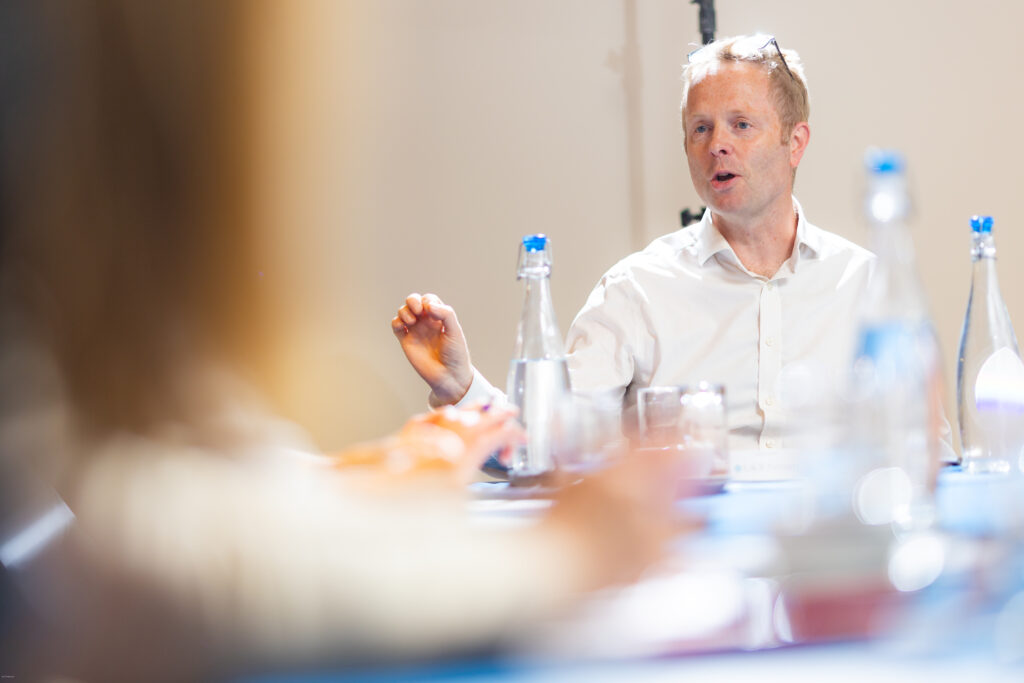
DO WE NEED TO RECONFIGURE HOW LEADERS LOOK AT THE FUTURE?
Aaron Alburey: Absolutely! CTOs know that current tech capabilities won’t be relevant in three years and they have no idea what the future skills requirements will be. That’s a huge mindset shift and leaders need to become far more comfortable with agility, empowered decision-making and building retraining strategies. The pace is relentless.
Alix Bolton: Right now, I see most digital investment going into delivery, not skills and that mismatch is a problem.
Julian Holmes: I actually think the skills side of things is less of a bottleneck now. With today’s tools, acquiring and distributing knowledge is easier. The real disconnect is on the demand side, understanding how work is evolving. That’s the question most businesses aren’t answering; “what is work becoming”? AI, automation and changing customer needs, they are transforming what work is, not just how it’s done.
WHAT TOOLS AND CAPABILITY DOES HR NEED?
Nebel Crowhurst: We tend to be experimenters, curious and willing to trial different approaches. Of course, we make sensible decisions about the scope, but perhaps in the past HR has been slow to adopt new technology. Personally, I don’t see it that way, I’ve always viewed technology as an enabler and a creator of efficiency. Rather than fearing that new technology means job loss.
Katrina Simpson-Haines: One of the main capabilities that’s hard to build in HR is organisational development and exposure to target operating models. This tends to happen only at more senior levels, so people aren’t building that muscle or understanding early enough.
Julian Holmes: Transformation is largely about facilitating good conversations, providing constructive challenge and being a critical friend to guide difficult discussions. I’d say 90 percent mindset and ten percent skillset is the key gap for successful change agency in HR.
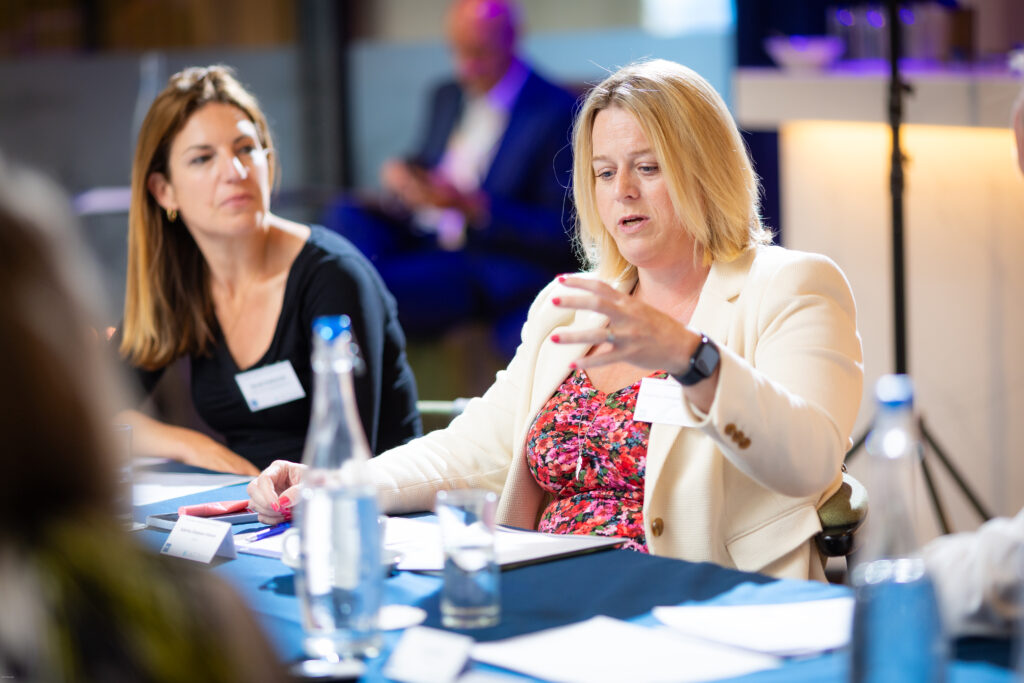
Katrina Simpson-Haines: You need to be able to step back, rather than just naming the primary drivers of the organisation, because those drivers can change rapidly.
Julie Armstrong: When you look at how fast people adopt change in their personal lives, it almost feels like there’s a “bubble” at work – an overly structured and curated environment – where we impose rigid ways for employees to change. Maybe we should focus more on giving people permission to test and fail.
Alix Bolton: There’s definitely a link between being a colleague and a consumer of change and learning. When designing the future of work, you have to reverse engineer from the outcome to the skills needed. One major weakness I see is the ability to give and receive feedback effectively, sustainably and successfully.
Julian Holmes: Capability and capacity – combined with the right environment – can create agility. Some teams work best when told outcomes rather than processes; “here are the outcomes, go and make it happen”. Of course, that depends on the work area and isn’t suitable for safety or regulation-heavy roles.
Sarah Petherick: Talking in terms of outcomes instead of outputs is a skill in itself and a big hurdle. Whether it’s flexible working or ownership, framing it through outcomes helps people act like business owners. HR should think more like a business owner – understand the customers’ problems and follow the value chain.
WHAT IS YOUR WORKFORCE PLANNING STRATEGY?
Hayley Tatum: Particularly in customer-facing roles, consistency matters – the core brand experience has to be the same everywhere – with individual personality sprinkled on the top. Early design involvement and co-creation with frontend colleagues is crucial.
Nebel Crowhurst: Agreed, the frontline workforce challenge is huge, especially with minimum wage considerations. Keeping within legislation while engaging lower-paid workers is tough, but essential. Every business has different challenges and contexts, so solutions vary, but it’s definitely a shared struggle.
Katrina Simpson-Haines: The squeeze is felt more up the hierarchy now too. As the base wage increases, middle management becomes the pressure point. They’re expected to be more creative and entrepreneurial with less differential in pay. Keeping middle managers engaged is key since they play a crucial role.
Julian Holmes: You can’t apply the same process mindset everywhere. Some work benefits from consistent, repeatable processes to eliminate waste, while others like product launches involving multiple functions and decision-makers, is variable and requires outcome-based thinking rather than rigid processes. The hard part is enabling cross-functional collaboration and flexibility.
IS YOUR ORGANISATION IS FUTURE READY?
Alix Bolton: Yes, there’s definitely openness and willingness to be future ready. One challenge we see is the sheer level of activity – how to create conditions so the whole organisation, beyond just executives, is ready and open to whatever comes next.
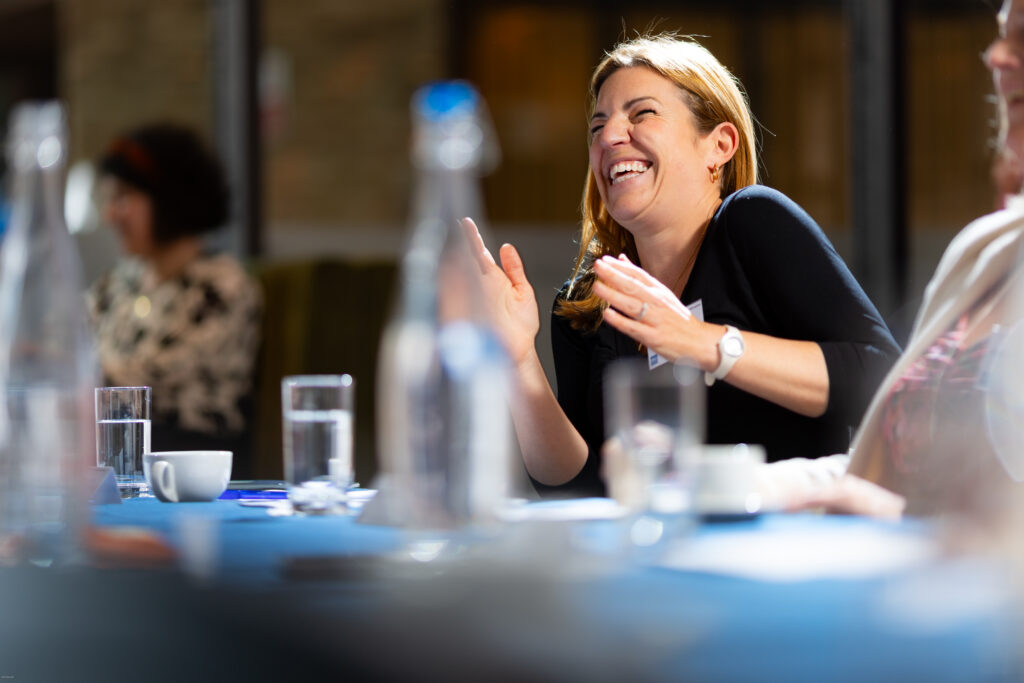
Julie Armstrong: Whether leadership is future ready is hard to define because the “future” is unknown. I’d say they are VUCA-ready – able to manage volatility, uncertainty, complexity and ambiguity – especially in sectors where constant transition is normal.
Aaron Alburey: We’ve talked about mindset gaps, resilience, psychological safety and collaboration and these are elements that HR needs to sustain to help leadership teams to be fully future ready.
Alix Bolton: It’s our ability to join dots and piece things together, for the exec team and making the people side of the business visible within the boardroom.
WHAT HAS BEEN YOUR EXPERIENCE IN PARTNERING WITH THIRD-PARTY CONSULTING FIRMS?
Nebel Crowhurst: Often what happens is not so positive with external resources, because they don’t truly understand what’s going on in the organisation. A really great third-party external partner has to focus on that.
Hayley Tatum: I don’t think there’s a single answer to this, any third-party coming in has to be a student of your business and understand the capabilities and the skill-sets that the organisation already has and therefore to be brilliant partners alongside you helping fill gaps that you might not have and might not need permanently. Third parties might join a C-suite team for a period of time to help solve a particular hurdle and then step back so that the leadership team can continue the journey as they need to.
Alix Bolton: It’s around clear contracting. You have to feed the contract up front and support, not stand back and watch.
Julian Holmes: It requires mutual honesty. Consultants might need to say “this isn’t the right time for our input, this isn’t what you really need right now.” In some cases, rather than diving straight into a big implementation, we might propose a short period of coaching – not in the formal sense – but just some guided conversations to help the client think more clearly. If you’re considering buying in services, I’d encourage you to ask yourself not just what you want delivered, but what you actually need.
Julie Armstrong: I’ve seen consulting work brilliantly when the consultants are either aligned with a strategic issue and steered by someone internally or when they bring in deep technical expertise. In those situations, the line manager remains the face of the organisation and the partnership adds real value.
Sarah Petherick: Consultants can be great at sparking ideas and offering fresh insight and that doesn’t require a 100 percent understanding of our business. If you’re going to be an interventionist, then you need to learn our language and culture.
Katrina Simpson-Haines: I see third-party support as a huge opportunity, but only when both sides understand their role. The business must own just as much of the success as the consultants. For short, discrete pieces of work, the brief needs to be clear, but there also has to be room for exploration and different perspectives. I’ve done this in areas like EVP and proposition work short-term engagements that often develop further. With more complex work, like HR operating models, you really need consultants who can go under the skin of your organisation.
FINAL THOUGHTS ON TODAY’S DEBATE.
Aaron Alburey: The main theme is the constant presence of change, whether it’s technological, geopolitical or organisational. That’s not going away and the role of the CPO now is about integration. HR is not just managing people processes, we’re guiding transformation, shaping culture and supporting our fellow executives in navigating change. Practitioners operate in a uniquely privileged space within the business and over the next three-to-five years, I believe HR’s greatest contribution will be helping organisations be ready to change well. That’s where the real value lies.
Julian Holmes: HR is on a journey and in today’s business context, there is a real opportunity to step into that shaping role, to take what often feels intangible and make it practical, valuable and impactful, not just for the organisation, but for the people within it. That’s what excites me most and that is where the biggest differences can be made.
For further information on our partner and how they can help with your people and business transformation visit: WWW.LACEPARTNERS.COM







